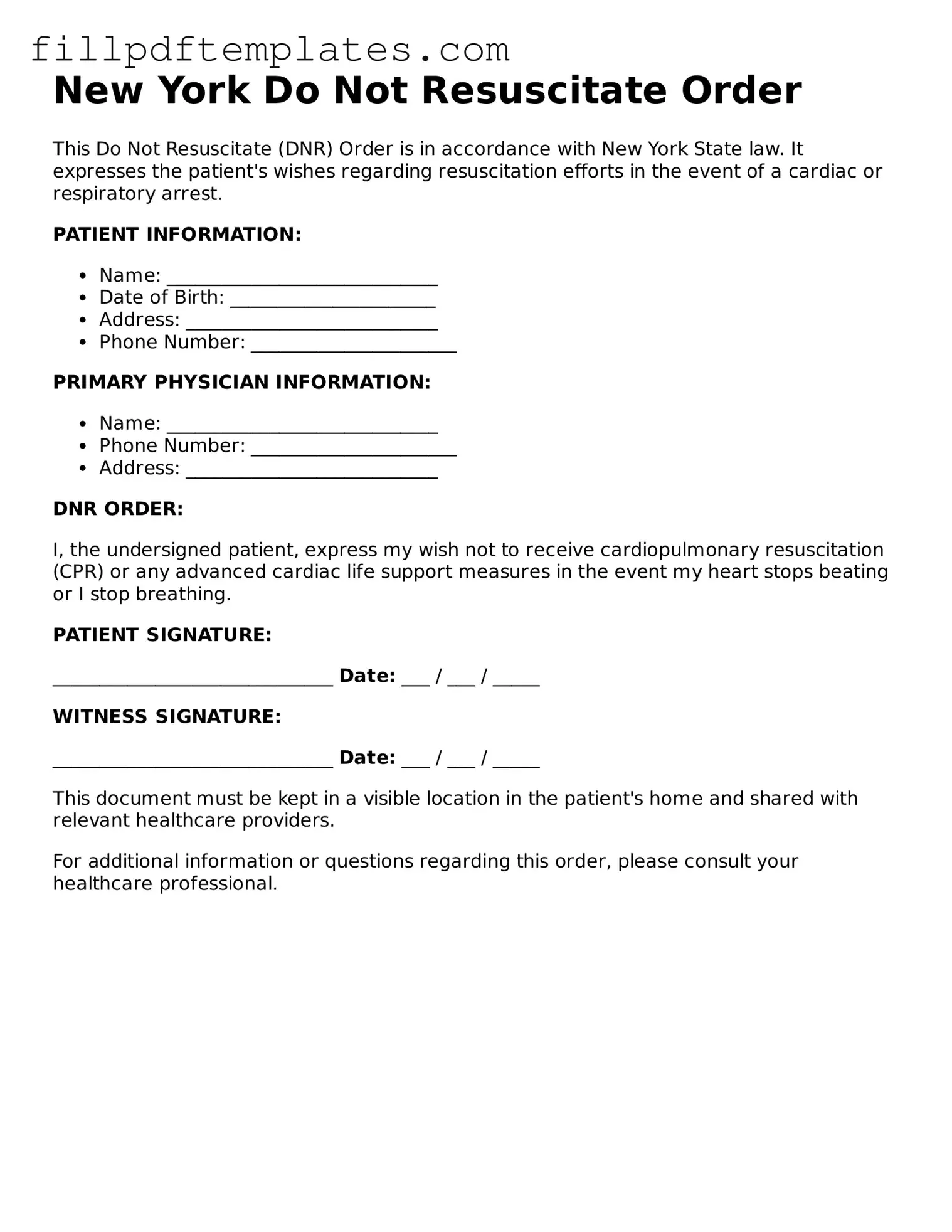Blank New York Do Not Resuscitate Order Form
A Do Not Resuscitate (DNR) Order is a legal document that allows individuals to express their wishes regarding resuscitation efforts in the event of a medical emergency. In New York, this form is designed to ensure that a person's preferences for end-of-life care are respected by medical professionals. Understanding the importance of this document can help individuals make informed decisions about their healthcare.
If you're ready to take the next step in expressing your healthcare wishes, consider filling out the form by clicking the button below.
Get Form
